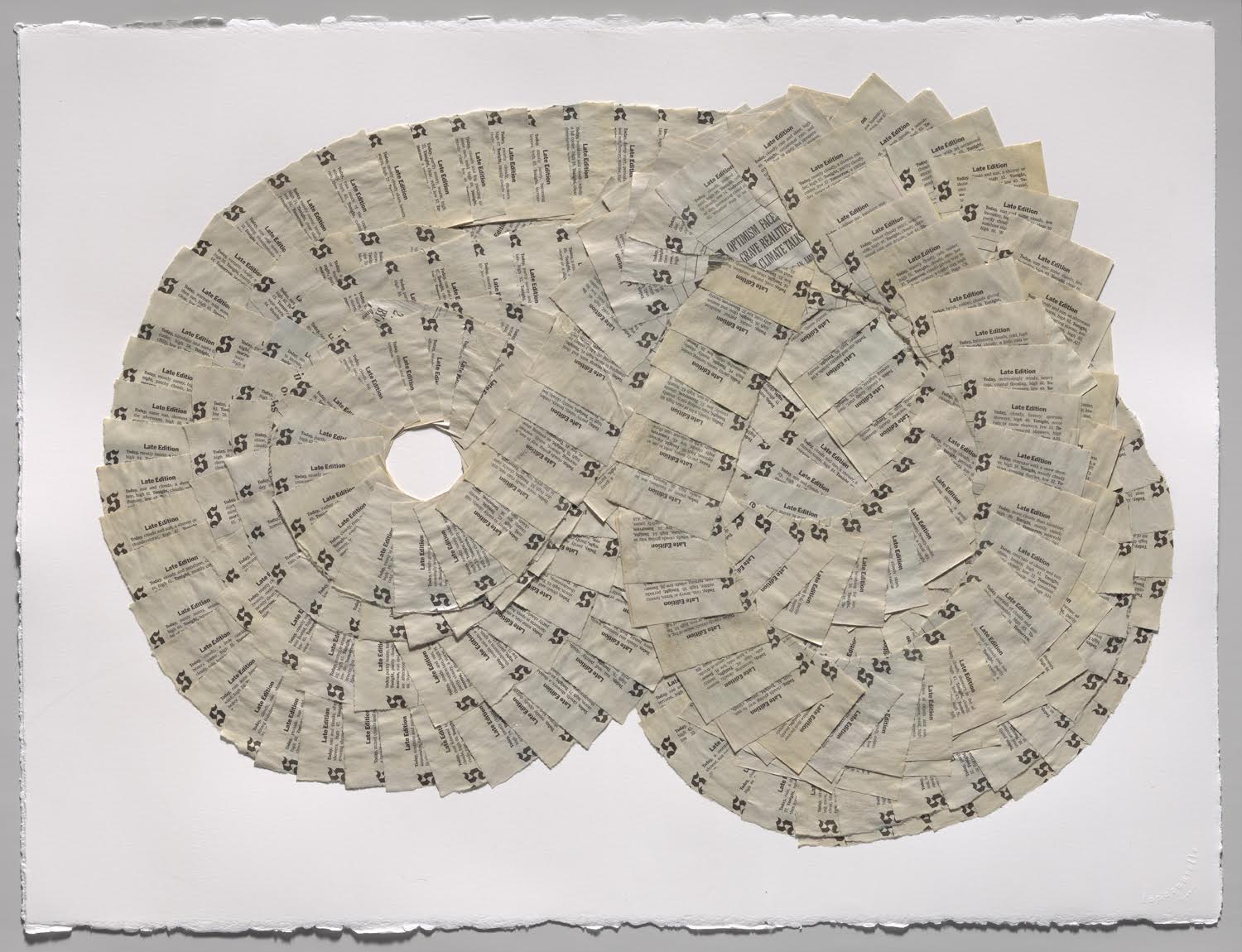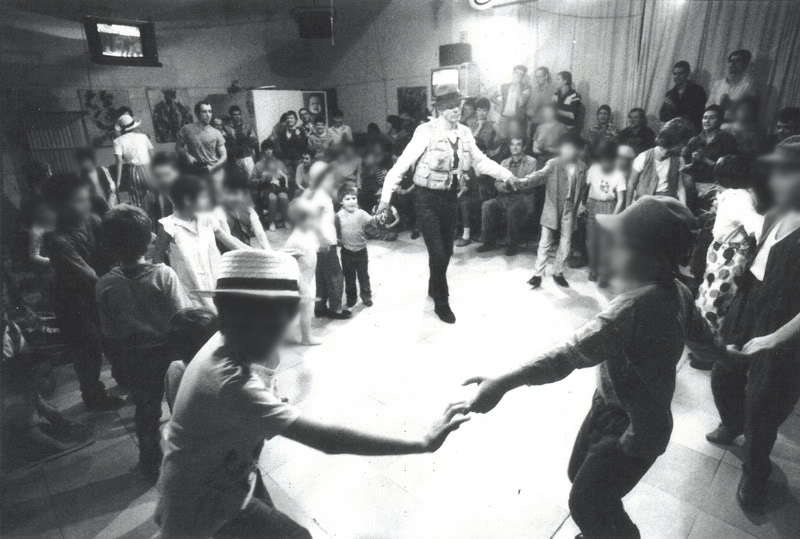Since September 18, 1851, The New York Times has reported, according to the paper’s slogan, “all the news that’s fit to print.” In doing so, the newspaper has won more Pulitzer Prizes than any other daily in the country, and it is widely regarded as the gold standard in American journalism.
The paper’s front page sets the day’s agenda for not only New York but also regional and local newspapers. The Times’ outsized influence on American life has long been a point of interest for artists. In an era in which President Trump refers to the paper as “the failing New York Times” and “fake news,” a new exhibition entitled The Times examines how the “paper of record” has been used by artists historically, and now contemporarily, to investigate pressing issues. A group exhibition on view at The Flag Art Foundation features 81 artists who use The Times to address a range of issues from the AIDS crisis and 9/11 to race and gender identity.
Videos by VICE

“In the wake of the presidential election, and especially given last year’s election coverage and the way The New York Times, in many respects, was targeted, the two of us were thinking about how to engage artists in this conversation,” Stephanie Roach, who co-curated the exhibition with Jon Rider, tells Creators. “Jon’s great idea to center the show solely on The New York Times seemed like such a rich territory to mine.” Rider adds, “Historically, there are so many artists who have worked with not just the newspaper in general but specifically The Times.” He says, “The Times has been the backbone of the press for a long time, so we thought it would be interesting to see who else was working within that conversation” contemporarily.
The keystone piece that anchors the exhibition of painting, performance, mixed-media, flat work, and video is Ellsworth Kelly’s seminal 2003 collage Ground Zero. To the architecture critic of The Times, Kelly proposed a way of creating a 9/11 memorial by taking a cover of the “Arts and Leisure” section of the paper, which had an aerial view of Ground Zero, and placed a small green trapezoid on the blank space. He wanted the memorial to be a place where people in the city could come together and reflect in a green common space that paid respect to the tragedy by alluding to a burial mound. The piece foreshadows how the show is comprised of both artists selected by the curators to provide context and historical perspective and open call submissions that deal with the here and now.

The Times, a mix of submissions and researched-based selections, produces what Roach calls a “cacophony of voices” that shows the diversity and range of artists who have used The Times as a way to approach complex past and present issues. “Some artists are overtly interested in the politics of the newspaper, some artists were more interested in using the paper as a means of documenting time, some artists looked specifically at the use of gender pronouns and language,” says Rider. “Our thought was there’s no one way of reading the newspaper, so the work could range from the overly political to the abstracted.”

Lorraine O’Grady’s 1977 text work, Cutting Out the New York Times, You Can Succeed in Your Own Business, from her larger series, Cutting Out the New York Times, represents the earliest art mounted in the show. A cryptic poem created from reading the paper’s headlines every Sunday in August of 1977 is an attempt by the artist to see the personal in public language.
O’Grady’s poem compliments and contrasts Rirkrit Tiravanija’s Untitled 2017 (tomorrow is the question, January 21, 2017). The work shows pages of The Times, embossed with a message: “TOMORROW IS THE QUESTION.” Tiravanija made the work the day after the stunning 2016 presidential election. Other works in the exhibition use the paper as a way to track increments of time. For instance, mounted in the show is Nancy Chung’s July 1996. The work is from a larger endurance piece, for which the artist painted on the paper’s front page everyday for all of 1996. In July 1996, she blocks in blue all the articles that deal with tragedy.

“In the midst of the exhibition-making process, what it came down to is having really interesting, thought-provoking work that tapped into the community,” says Roach. “The idea became more about providing a voice for a community of artists that wanted to be heard. By no means is this a comprehensive survey, but we were aiming to create an environment that encouraged dialogue.”
Rider adds, “Post-election, there has been a lot of anxiety and uncertainty in the air, and just seeing how artists have historically responded to what’s going on, it felt important to put this moment in the context of a thousand other political moments and a thousand other personal moments.” He says, “Artists respond. They make work and digest what’s going on. The Times just seemed like a perfect way to talk about now and twenty years ago.”



The Times continues through August 11 at The Flag Art Foundation. Click here for more information.
Related:
“Gucci Mane Logic” Painter Uses Appropriation to Explore Art History
A Journalist’s Art Project Highlights Media Bias Against Black Men
A Massachusetts Newspaper Is Getting a Daily Dose of Typography
More
From VICE
-

A gang of men hide in a clown car at the Ringling Brothers Barnum and Bailey Circus. April 1977, New York City. -

James Earl Jones in 1994. Photo by Walt Disney Co/Everett/Shutterstock. -

-

Children at the Friedrichshof Commune dance with renowned artist Joseph Beuys. Inka, aged four, holds his right hand.
